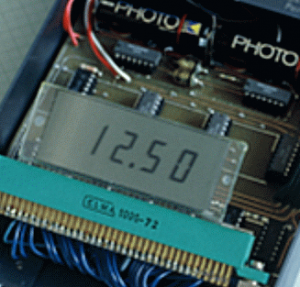
In what is perhaps the pinnacle of Engineering Week, this year's Charles Stark Draper Prize, one of the world's preeminent awards for engineering achievement, was awarded to technology pioneers George H. Heilmeier, Wolfgang Helfrich and Martin Schadt, and T. Peter Brody for the development of the liquid crystal display - the LCD.
A long post in ieee spectrum called the Draper Prize, named in honor of the M.I.T. professor who perfected the inertial navigation systems used during the Apollo missions, "the Nobel Prize of engineering." The annual $500,000 award recognizes engineers whose accomplishments "have led to important benefits and significant improvement in the well-being and freedom of humanity."
Since the liquid crystal display is used by everyone in the modern world as the primary conduit or medium for information - including calculators, clocks, computer monitors, smart phones, and television screens - this achievement represents the epitome of the engineering ethos. Watch a short CNN segment celebrating the impact of LCD technology:
A brief history of the LCD
While working at RCA in 1964, George Heilmeier began a series of experiments on the electro-optic properties of liquid crystals. He observed that under a strong electric field certain transparent liquid crystals scattered light, appearing milky-white until the field was removed. This "dynamic scattering" effect could be used to create high-resolution static images and basic moving patterns. These displays were used in the first LCD wristwatches and calculators.
Notably, in 1975, long after his work at RCA, he was named director of the Defense Advanced Research Projects Agency (DARPA) and initiated major research efforts like the stealth aircraft.

Improving upon Heilmeier's work, Wolfgang Helfrich and Martin Schadt invented the twisted nematic (TN) field effect. Capable of operating at much lower power, these LCDs soon supplanted the earlier technology and have become the driver of the modern LCD industry. The technology has become so ubiquitous that you are probably reading this article on a twisted nematic display right now.
Later, T. Peter Brody, who obtained a Ph.D. in theoretical physics from the University of London in 1953 and moved to the US to work as a researcher for Westinghouse Electric Corporation, created the active matrix (AM) drive, which enabled an array of new capabilities for LCDs. Among these capabilities was the display of high resolution motion pictures combined with fast response, which are prerequisites for television. Brody opened the

door for further LCD advancements in television, including color filters and brightness-enhancement.
Three decades of additional advances in integrated circuit design and chemical engineering were needed to transform Brody's prototype into the full-color displays that people take for granted today, but by the mid-1970s all of the key technologies were in place. Now we take advantage of this technology without even thinking, because it's so deeply woven into our lives.


